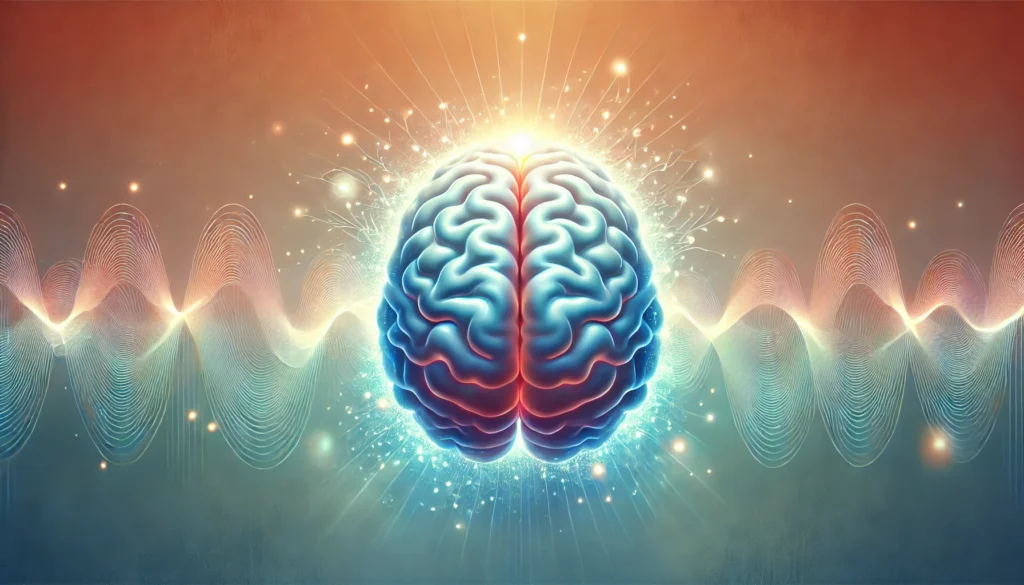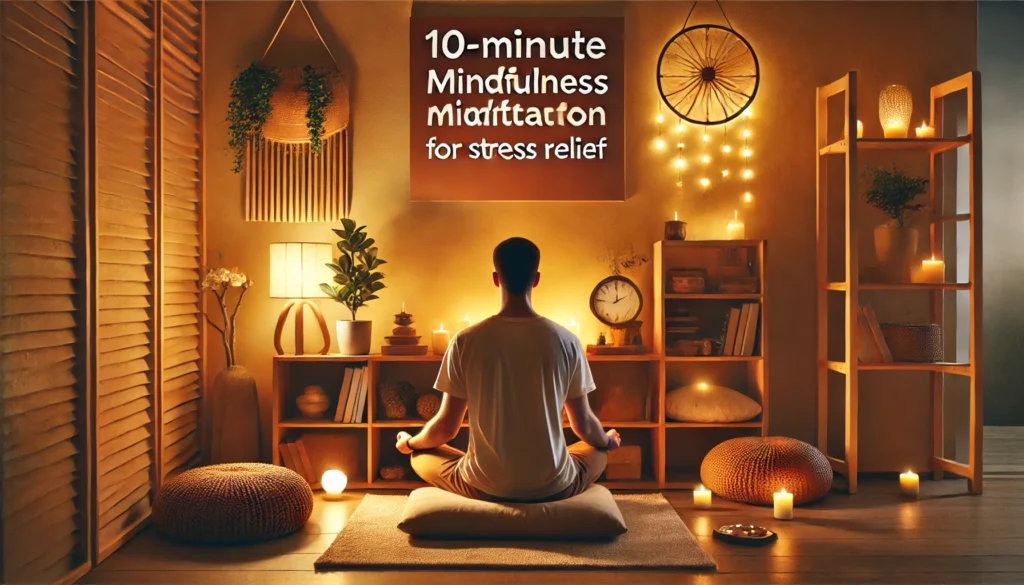In today’s fast-paced world, stress has become an unwelcome companion. Whether you’re a health and wellness coach, a science journalist, or a biohacker, understanding and mitigating stress is crucial for optimizing mental and physical health. While stress is a natural response to challenges, chronic stress can have detrimental effects on your well-being. Fortunately, meditation offers a scientifically-backed approach to managing stress, even for those on a tight schedule. This article explores several quick meditation techniques that can help reduce stress and improve overall health.
You may also like: Mindfulness Practices to Sharpen Your Focus
Understanding Stress and Meditation
Stress is a physiological and psychological response to perceived threats or challenges. It’s an evolutionary mechanism designed to keep us alert and ready to face danger. However, in modern times, stressors are often continuous and less life-threatening, such as work deadlines or financial pressures. Chronic stress can lead to a host of health issues, including anxiety, depression, heart disease, and weakened immune function.
The Evolutionary Role of Stress
Stress has played a crucial role in human survival, acting as an alarm system that prepares the body for ‘fight or flight’ responses. This mechanism increases heart rate and adrenaline levels to enhance physical performance. However, in today’s environment, this heightened alertness often gets triggered by non-threatening situations, creating a constant state of readiness that can wear down the body and mind over time.
Chronic Stress: Modern Challenges
Unlike acute stress, which is short-lived, chronic stress persists over long periods. It often results from ongoing situations such as demanding jobs, financial difficulties, or strained relationships. The body remains in a heightened state of stress response, which can disrupt sleep patterns, digestion, and emotional balance, leading to serious health implications if not managed effectively.
Meditation as a Counterbalance
Meditation acts as an antidote to stress by promoting relaxation and mental clarity. It encourages a state of restful alertness, where the mind remains engaged but relaxed. Techniques like mindfulness, deep breathing, and visualization help shift the nervous system from a state of stress to one of calm, thereby reducing the physical and mental toll of stress.
10-Minute Meditation for Stress Relief
For those short on time, a 10-minute meditation session can offer significant stress relief. Here’s a simple technique to get started:
Finding Your Meditation Space
Creating a dedicated space for meditation can enhance your practice. Choose a quiet spot that feels comfortable and safe. This area should be free from distractions, allowing you to focus solely on your meditation. Consider adding calming elements like soft lighting, cushions, or a blanket to enhance your comfort.
Setting a Mindful Timer
Using a timer is crucial for maintaining a focused meditation session. Set a gentle alarm that won’t startle you at the end of your practice. Knowing that your time is being tracked allows you to immerse yourself fully in the meditation without the constant urge to check the clock.
Breath Awareness and Mindfulness
Begin your meditation by closing your eyes and taking several deep breaths. Focus on each inhalation and exhalation, feeling the rise and fall of your chest. As thoughts arise, acknowledge them without judgment and gently return your focus to the breath. This practice helps ground you in the present moment, reducing anxiety about past or future events.
Body Scan for Tension Release
Conduct a body scan by directing your attention to different parts of your body, from your toes to your head. Notice any areas of tension or discomfort and consciously relax them. This technique not only eases physical tension but also enhances body awareness, promoting a deeper sense of relaxation.
Visualization for Inner Peace
Visualize a place where you feel at peace, such as a beach or a tranquil forest. Imagine the details of this place—the sounds, smells, and colors. This mental imagery can evoke feelings of calmness and joy, helping to shift your mindset away from stress and towards serenity.
Returning to Daily Life
As your session concludes, gradually bring your awareness back to the present environment. Open your eyes slowly and take a moment to notice any changes in your mental or emotional state. Carry this newfound calmness with you as you resume your daily activities, allowing it to inform your actions and reactions.

Quick Stress Relief Techniques
While a dedicated meditation practice is beneficial, there are also quick stress relief techniques you can use throughout the day:
Deep Breathing Techniques
Deep breathing is a simple yet powerful technique to reduce stress. By taking slow, deep breaths, you stimulate the parasympathetic nervous system, promoting relaxation. Try the 4-7-8 breathing technique: inhale for 4 seconds, hold for 7 seconds, and exhale for 8 seconds.
Belly Breathing for Relaxation
Belly breathing, or diaphragmatic breathing, involves drawing breath deep into the lungs by expanding the diaphragm rather than the chest. This technique enhances oxygen exchange and promotes a greater sense of relaxation. Practice by placing a hand on your stomach and feeling it rise and fall with each breath.
Box Breathing for Focus
Box breathing is a method used by Navy SEALs to maintain calm under pressure. It involves inhaling for 4 seconds, holding the breath for 4 seconds, exhaling for 4 seconds, and holding again for 4 seconds. This square-like pattern helps stabilize the mind and body, making it ideal for moments of acute stress.
Resonant Breathing for Balance
Resonant breathing involves slowing your breath to about five breaths per minute, which can help synchronize heart rate variability and induce a state of balance in the autonomic nervous system. This technique is particularly effective for reducing stress and enhancing emotional well-being.
Progressive Muscle Relaxation (PMR)
This technique involves tensing and relaxing different muscle groups in sequence. It helps release physical tension and promotes mental calmness. Start from your toes and work your way up to your head, tensing each muscle group for a few seconds before releasing.
Starting with the Lower Body
Begin PMR by focusing on your feet and legs. Tense the muscles in these areas, hold for a few seconds, then release. Notice the contrast between tension and relaxation, which can deepen your awareness of how stress affects your body.
Moving to the Upper Body
Continue the practice by moving up to your abdomen, chest, and arms. Tense each muscle group individually, hold, and release. This systematic approach helps to ensure that no area of the body remains tense, facilitating a full-body relaxation experience.
Finishing with the Head and Neck
Conclude PMR by focusing on the neck, jaw, and facial muscles. These areas often hold significant tension, especially in stressful situations. Pay special attention to releasing tightness in these muscles to promote a sense of overall calm.
Mindful Walking Practices
Mindful walking combines physical activity with mindfulness. As you walk, focus on the sensation of your feet touching the ground, the rhythm of your breath, and the sights and sounds around you. This practice can be done in as little as 5 minutes and can be incorporated into your daily routine.
Walking with Awareness
Begin your mindful walk by taking slow, deliberate steps. Pay attention to how each footfall feels against the ground. Notice the movement of your body as it shifts weight from one foot to the other, creating a natural rhythm that can be both soothing and grounding.
Engaging Your Senses
As you walk, consciously engage your senses by observing your surroundings. Notice the colors of the leaves, the sound of birds, or the feel of the breeze against your skin. This sensory immersion helps distract the mind from stressors and brings you fully into the present moment.
Integrating Breathing and Walking
Coordinate your breath with your steps to deepen your mindfulness practice. Try inhaling for a set number of steps and exhaling for the same number, creating a harmonious flow between your breath and movement. This integration can enhance your sense of connection with your body and environment.

10-Minute Guided Meditation for Stress
For those who prefer guided sessions, numerous resources offer 10-minute guided meditations specifically designed for stress relief. These sessions typically include calming music or nature sounds, guided imagery, and breathing exercises. Platforms like YouTube, meditation apps, and podcasts are excellent sources for guided meditations.
Exploring Different Platforms
There are various platforms offering guided meditation sessions, each with unique features and benefits. YouTube hosts a wide array of free meditations, while apps like Headspace and Calm offer structured programs. Podcasts also provide diverse options, allowing you to select sessions that suit your preferences and needs.
Creating a Personalized Experience
Guided meditations can be tailored to your individual needs. Choose sessions that align with your goals, whether that’s reducing stress, improving focus, or enhancing sleep. Experiment with different styles and instructors to find what resonates best with you, ensuring a more enjoyable and effective practice.
Incorporating Technology into Meditation
Technological advancements have revolutionized meditation practices. Many apps and online platforms offer customizable meditation experiences, allowing users to select background sounds, session lengths, and focus areas. This personalization enhances engagement and ensures that meditation remains a rewarding experience.

Future Trends in Meditation and Stress Relief
The field of meditation and stress relief continues to evolve, with emerging trends and technologies offering new possibilities:
Virtual Reality Meditation Experiences
Virtual reality (VR) meditation is an innovative approach that immerses users in calming virtual environments. This technology can enhance the meditation experience by providing a visually engaging way to practice mindfulness.
Immersive Environments for Deeper Relaxation
VR meditation allows users to explore virtual environments like serene beaches, forests, or mountaintops. The immersive experience can deepen relaxation and focus, making it easier to detach from external stressors and engage fully in the meditation practice.
Personalizing VR Meditation
Emerging VR platforms offer customizable experiences, allowing users to select environments, background sounds, and guided instructions. This personalization can cater to individual preferences, making meditation more accessible and enjoyable for a wider audience.
The Future of Meditation Technology
As technology advances, VR meditation may incorporate biofeedback and artificial intelligence to adapt sessions in real-time based on user responses. This integration could optimize the meditation experience, providing tailored guidance for stress relief and emotional balance.
Biofeedback Devices for Enhanced Meditation
Biofeedback devices monitor physiological signals, such as heart rate and breathing patterns, to provide real-time feedback during meditation. These devices help individuals track their progress and optimize their meditation practice for stress relief.
Understanding Biofeedback Mechanisms
Biofeedback devices function by measuring bodily responses and displaying them visually or audibly. This information helps users become more aware of their physiological states, enabling them to make conscious adjustments to achieve relaxation and focus.
Benefits of Biofeedback in Meditation
Incorporating biofeedback into meditation can enhance self-awareness and improve technique. Real-time feedback allows users to identify stress triggers and modify their practice to achieve better outcomes, making meditation more effective for stress relief.
Future Innovations in Biofeedback Technology
Future developments in biofeedback technology may include wearable devices that seamlessly integrate with meditation apps. These innovations could offer personalized insights and recommendations, further enhancing the meditation experience and its benefits for stress management.
Conclusion
Meditation is a powerful tool for managing stress and enhancing overall well-being. Whether through a structured 10-minute session or quick stress relief techniques, incorporating meditation into your daily routine can lead to profound benefits. As you explore these practices, remember that consistency is key. Over time, you’ll likely find yourself better equipped to navigate the challenges of modern life with calm and clarity.
By understanding the science behind stress and meditation, embracing quick relief techniques, and staying informed about future trends, you’ll be well on your way to achieving a healthier, more balanced life.
Further Reading:
Meditation: A simple, fast way to reduce stress
16 Simple Ways to Relieve Stress
Important Note: The information contained in this article is for general informational purposes only, and should not be construed as health or medical advice, nor is it intended to diagnose, prevent, treat, or cure any disease or health condition. Before embarking on any diet, fitness regimen, or program of nutritional supplementation, it is advisable to consult your healthcare professional in order to determine its safety and probable efficacy in terms of your individual state of health.
Regarding Nutritional Supplements Or Other Non-Prescription Health Products: If any nutritional supplements or other non-prescription health products are mentioned in the foregoing article, any claims or statements made about them have not been evaluated by the U.S. Food and Drug Administration, and such nutritional supplements or other health products are not intended to diagnose, treat, cure, or prevent any disease.


